The very first comics. Types of comics
The emergence of modern comics preceded 18th century political cartoons by William Hogarth. They represented a series of drawings, united by a common thought.
The next important stage in the development of the art of creating comics was the activity Rodolphe Tepffer and Wilhelm Bush. The first became famous " The story of Mr. Vyo-Bois", The world fame another brought the popular poetic series" Max and Moritz, Narrating about two tomboy.
« Teddy bear and tiger"- so called the first American comic strip, which was published in 1892. No less popular was the story " Yellow kid»About the little boy from Of chinawho, in search of adventure, arrived in America..
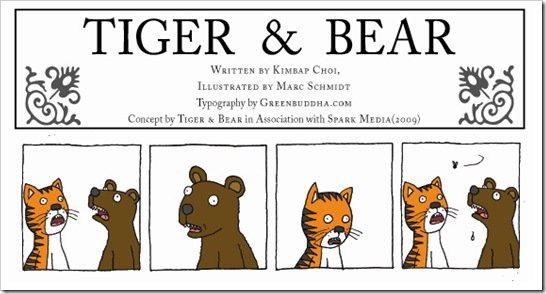
The famous comic book creator is Rudolf derks. It was he who invented bubbles", The frames in which the characters are placed.



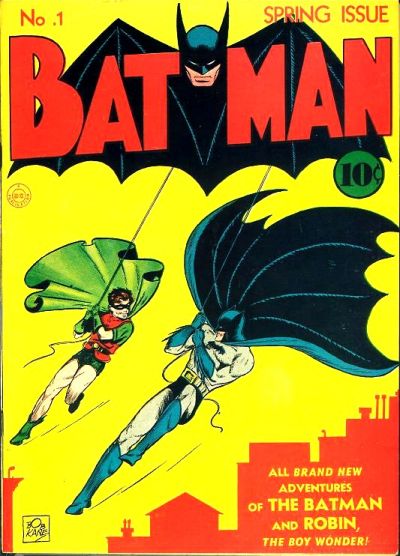
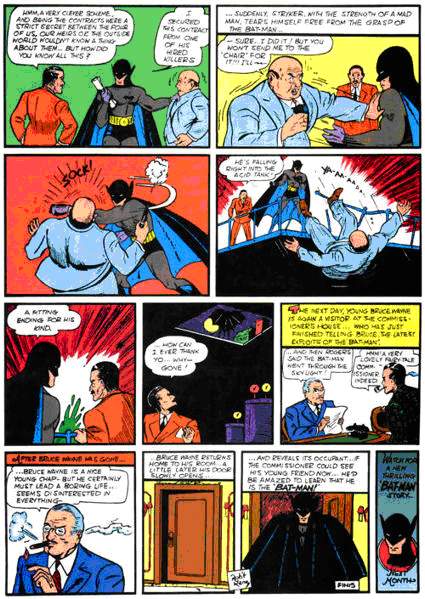
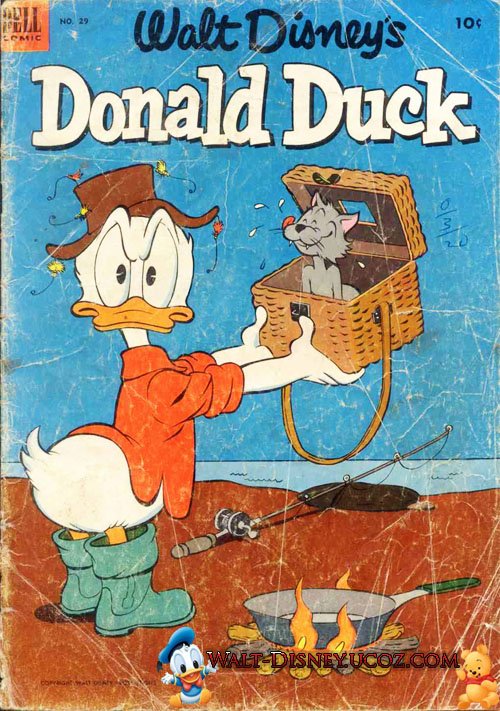

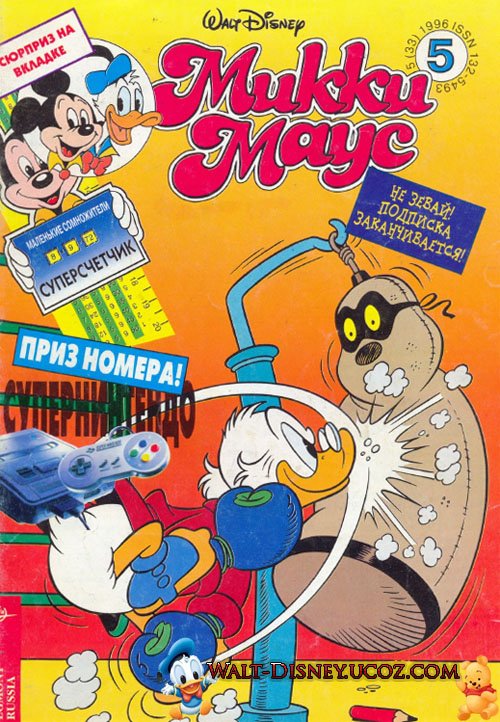
Whole publishing companies specializing in comic book publishing are being created: “Marvel”, “DC”, “Dark Horse” and “Image Comics”. One of the largest is the company Marvel. She has produced such masterpieces as “Fantastic Four”, “The Incredible Hulk”, “X-Men”, “Iron Man”, “Spiderman”.
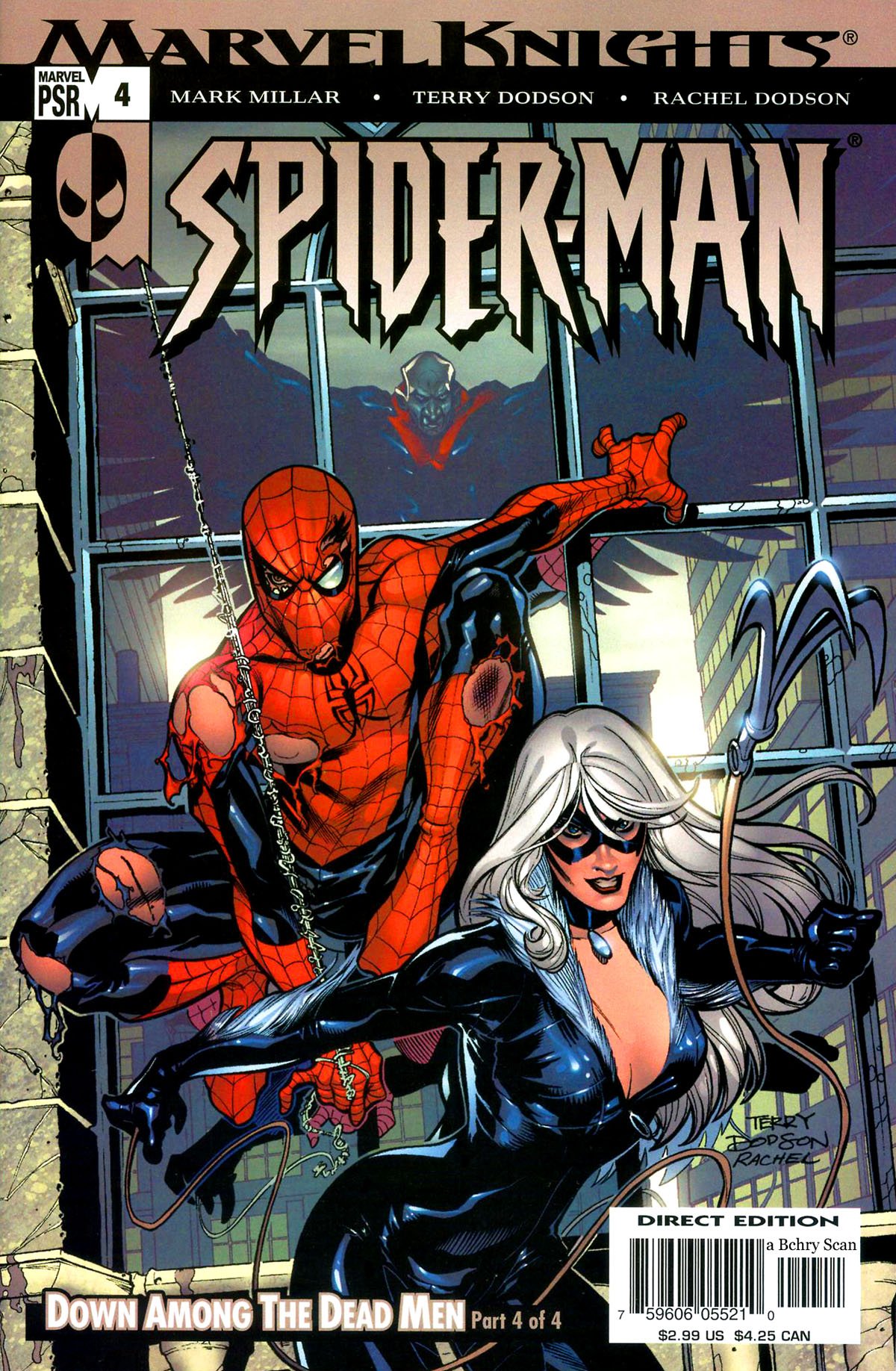
![]()

And now some crazy numbers:

The first number of comics about Supermanwas acquired this year for 1 million dollarsin the distant 1938it could be purchased for 10 cents.
Behind 100 thousand eurospurchased the original title picture of the comic "".
The first edition of comics about Spidermancost in 40 thousand dollars, at 1963 its cost was 12 cents.
116 years ago, on October 18, 1896, the first comics appeared in the magazine “New York Journal”, vivid pictures with short texts that told about brave heroes and their exploits. But did comics really appear only in 1896? Let's look at the history! ..
The emergence of modern comics preceded 18th century political cartoons by William Hogarth. They represented a series of drawings, united by a common thought.
The next important stage in the development of the art of creating comics was the activity Rodolphe Tepffer and Wilhelm Bush. The first became famous " The story of Mr. Vyo-Bois", The world fame another brought the popular poetic series" Max and Moritz, Narrating about two tomboy.
« Teddy bear and tiger"- so called the first American comic strip, which was published in 1892. No less popular was the story " Yellow kid»About the little boy from Of chinawho, in search of adventure, arrived in America.

The famous comic book creator is Rudolf derks. It was he who invented bubbles", The frames in which the characters are placed.

Golden age of comics
This period in the history of American comics, which lasted (according to various estimates) from the late 1930s to the mid-1950s. The first serious steps in the development of the art of graphic novels were made at the beginning of the 20th century, in search of new ways of graphic and visual communication and self-expression. At first the comics were purely humorous. This is largely due to the etymology of the English word that defined their name. This situation radically changed in June 1938, when a character appeared in the US Superman (eng. Superman).
The beginning of the golden age is considered to be the first appearance of Superman in Action Comics, published in 1938 and published by DC Comics. The appearance of Superman was very popular, and soon the superheroes literally flooded the pages of comics. Other characters that have long been popular have become Plastic (eng. Plastic man), published by Quality Comics, as well as detective Spirit by caricaturist Will Eisner, who originally appeared as a supplement combined with the Sunday edition of the newspaper.
In total, over 400 superheroes were created during this period. Most of them strongly resembled Superman and did not live to the present day, but it was then that such heroes were born as Batman and Captain America.
The Second World War had a serious impact on the content of comics about superheroes - now the heroes fought with the Axis countries, and on the covers depicted superheroes fighting the leader of the Nazi movement, Adolf Hitler. After defeating fascism, superheroes with nuclear abilities began to appear, for example Atomic Thunderer and Atomic Man. Historians of the time believe that children's characters helped to weaken the fear of young readers about the prospects of atomic war. In addition, the heroes began to fight the Communists, and some were involved in the Korean War.
However, after the end of the Second World War, the popularity of superheroes began to decline. In general, it was during the time of the golden age that the new direction to the present day in the comics, superheroes and new worlds, manifested itself.



Along with super-heroes, cartoon characters appear in the comics. For example, stories about Donald Duck or Mickey Mouse. They win not only the nursery, but also an adult audience.


Whole publishing companies specializing in comic book publishing are being created: “Marvel”, “DC”, “Dark Horse” and “Image Comics”. One of the largest is the company Marvel. She has produced such masterpieces as “Fantastic Four”, “The Incredible Hulk”, “X-Men”, “Iron Man”, “Spiderman”.


AT 1970 - 1980 great competition began in the comics industry between the two largest printing companies Marwell and Dell. “Dell” begins to re-publish comics of the 30s - 50s, and “Marwell Comics” responds with a series of new adventures Spiderman.
AT 1977 - three months before the release of the sensational science fiction film by George Lucas, Star Wars, the Marwell Comics company takes revenge by starting to publish a series of comics based on the film. “Star Wars” exceeded all expectations, breaking all record runs. Warner Communications attracts readers with characters Hulk, Doctor Strange, Dick Tracy and Flash Gordon. Subsequently, on these comics were feature films and animated films.
1989 the year became the fifteenth anniversary Batman. A cycle of comic strips was timed to this year and the feature film “Batman” was shot, in which such first-class actors as Michael Keaton (Bruce Wayne) and Jack Nicholson (Joker) took part, everything was thought out to the smallest detail, and the film became the highest grossing in history cinema (for that period), and comics brought a lot of money.
AT 1990 year comes the series "Classics in Illustrations", which included "Moby Dick", "The Crow", poems by Edgar Allan Poe, "High Expectations" by Dickens, "Alice in Zazaerkale" by Lewis Carroll. A real sensation was made by the Mutant Ninja Turtle, which was released by Mirage Studios, screenwriters Kevin Eastman and Peter Lurd.
A variety of comics exist around the world from Chinese manhua to Japanese manga, comic books in the United States and comic books with short strips in Europe. Despite all the diversity of styles and genres, the main task of the comic book is to evoke feelings and emotions in the reader. Elements such as dialog bubbles or frames with text are used to display a dialogue, and to convey the necessary information to the reader. The drawings and their location, as well as various auxiliary elements are designed to support the sequence of events in the narration.
The most famous form of printed comics is the so-called strips, or miniatures. Usually they consist of four small drawings, one after the other and are published in newspapers and magazines. More voluminous comics are published in the form of individual magazines, books or albums.
Figures and facts:
 In New York at the Heritage Auctions auction in February 2012, a collection of rare comics, owned by Billy Wright, was sold. As reported, the comics went under the hammer for 3.5 million dollars.
In New York at the Heritage Auctions auction in February 2012, a collection of rare comics, owned by Billy Wright, was sold. As reported, the comics went under the hammer for 3.5 million dollars.
The 27th issue of the collection of Detective Comics (1939), on the pages of which Batman first appeared, was the top lot among the auctions on display. Edition bought for 523 thousand dollars. In 1939, to the late Billy Wright of Virginia, the compilation No. 27 of Detective Comics cost 10 cents. At auction also sold the first collection of Action Comics (1938), where Superman debuted. They paid him 299 thousand dollars.
 A collection of unique comics sold at auction in the French capital for 650 thousand euros. According to the organizer of the auction - Sotheby’s auction house, about a hundred of the most popular among collectors of pictures and drawings of famous European, American and Japanese artists went under the hammer.
A collection of unique comics sold at auction in the French capital for 650 thousand euros. According to the organizer of the auction - Sotheby’s auction house, about a hundred of the most popular among collectors of pictures and drawings of famous European, American and Japanese artists went under the hammer.
Among the most expensive lots is the original illustration published in the Soir newspaper for the Mysterious Star comic from the Tintin Adventures series, which was sold for more than 234 thousand euros. Belgian artist Georges Remy, who worked under the pseudonym Herge, painted this paw in 1941 as the faithful dog of the fearless journalist Mila was smeared with paws in tar.
 Behind 100 thousand eurospurchased the original title picture of the comic book " Black island". And the first edition of comics about Spidermancost in 40 thousand dollars, at 1963 its cost was 12 cents.
Behind 100 thousand eurospurchased the original title picture of the comic book " Black island". And the first edition of comics about Spidermancost in 40 thousand dollars, at 1963 its cost was 12 cents.
Work on the topic of research began with a study of the history of the creation of comics, to get acquainted with the comics created in different countries.
First of all, the study on the topic began with finding out the answer to the question: What is a comic? The answer to this question we found in the encyclopedia. Comics (from English comic-funny) a series of drawings with short texts, forming a coherent narration. Each of us read, or at least knows what a comic is. But not everyone is familiar with the history of this printed product. We decided to study the history of the life of the comic.
Having studied many sources, we learned that the first comics appeared only at the end of the 19th century. The famous confrontation between the two American newspaper owners William Randolph and Joseph Pulitzer began. In March 1897. In the newspaper "New York American" artist Richard Autcolt first mentioned the comic. Then very few people paid attention to this new phenomenon, and only in the early 1920s did short stories about “Mat and Jeff,” “Grand's Fax,” “Buster Brown” and “Barney Googly” began to appear. Gradually, this genre began to develop. So in 1922, the magazine "Comic Monthly" begins to regularly allocate a column specifically for comics.
From 1929 to 1933, George Delacoth published 36 editions of the comic book entitled "The Funniest" - this was the first color edition of the comic book.
In 1933, the idea of printing in color was picked up by employees of the New York company Eastern Color Printing Company. They printed a thirty-two-page comic book "Funniest on Parade" with a circulation of 10 thousand copies, which soon grew to a quarter of a million. From 1933 to 1940, comics began to be published regularly in various newspapers and published in separate books. But the most important thing is that the monthly magazine Famous Funnies began to be published, the circulation of which was already initially large - 400 thousand copies.
1938 - another magazine appeared - "Action Comics" - the main character, who was Superman, and a little later, as if in opposition to Superman, the light appeared, Batman, the bat man.
From 1944 to 1952, a whole series of new super-comics came out, such as "Captain America", the series "Military Comics", "Police Comics" and a whole set of cartoon characters: "Rabbit Bugs Bunny", "Duckling Donald", "Mickey Mouse", "Porky Pig"; a series of patriotic, anti-war, anti-fascist comics, the first appearances of horror comics with the villain Frankenstein. It was a real comic boom. All of them came out in different editions, but the rarest comics were Della and Harvey: a circulation of not more than 100 pieces.
1953 - 1959 years. A slight decline in sales of comics due to their relatively low quality.
1960 - 1970. Again the rise and the most significant event was the emergence in August 1962 of a new comic book character Spiderman (Spiderman) - Spiderman. It was invented by the writer Sten Lee, and painted by artist Steve Ditko.
In 1970, the new boom produced the series "Conan the Barbarian" based on the novel by Robert Howard.
1970 - 1980. The beginning of fierce competition in the comics industry between the two largest printing companies Marvell and Dell. “Dell” begins to re-publish the comics of the 30s - 50s, and “Marwell Comics” responds with a series of new adventures of Spiderman.
1977 - three months before the release of the sensational science fiction film by George Lucas "Star Wars", the company "Marwell Comics" began to publish a series of comics based on the movie. Star Wars exceeded all expectations, breaking all record runs. Warner Communications attracts readers with the characters Hulk, Doctor Strange, Dick Tracy and Flash Gordon. Subsequently, on these comics were feature films and animated films. Even the music magazine Heavy Metal pleased the avant-garde comic book of the best European artists.
In the years 1980 - 1990. Industry comics in full bloom.
1989 was the fifteenth anniversary of Batman. A cycle of comic strips was timed to this year and the feature film “Batman” was shot, in which such first-class actors as Michael Keaton (Bruce Wayne) and Jack Nicholson (Joker) took part, everything was thought out to the smallest detail, and the film became the highest grossing in history movies, and comics brought a lot of money.
1990 year. The series “Classics in Illustrations”, which included “Moby Dick”, “The Raven”, poems by Edgar Allan Poe, “High Expectations” by Dickens, “Alice in Zazaerkale” by Lewis Carroll, is coming out. The "Ninja Turtle Mutants" produced by Mirage Studios, screenwriters Kevin Eastman and Peter Lurd made a real sensation. A series of comics is being released, the same-named multi-part animated and feature films are being released. The same happened with the film "Back to the Future", only in the reverse order: the film is a cartoon - comic. The company "Dark Horse" begins to print comics based on sensational films, such as "Alien", "Predator", "Terminator". At a time when comic studios compete with each other, the "Walt Disney Company" pleases the kids Mickey Mouse, Goofy, Donald and their other cute characters, being out of competition. Rock music is another theme that is found in comic books of the 90s, stories in pictures are created for almost all then popular rock stars. The comics even reflected the events in the Persian Gulf in 1990, which were especially keenly received by the Americans.
Entire generations of people around the world grew up on comics. And to this day this kind of creativity remains in demand and beloved among adults and children.
Today, comics are a form of serious modern art, a kind of mix of literature, cinema, animation and visual art.
![]()
Date: June 16, 2015 /
Diving into the world of drawn stories, sometimes you wonder how many scenes and styles exist in our day. At the beginning of your journey, you unite all these drawn stories with the simple word “Comics”, then having received a close experience of communicating with the creative work of the network, for you the differences of some stories from others begin to emerge.
In the 21st century, the Internet is in almost every home and human creativity begins to gain momentum due to easy access and the ability to quickly find like-minded people.
The blog “website” is dedicated to the “web” or as they are sometimes called “online” comics. However, what is the difference between them from other drawn stories? This article will be a small guide on the types of comics, and you can read about web comic formats.
For each type of comic book, I cite several references to works that personally inspired me greatly. There are a lot of links to Ozone, although you can always download them from trackers, but the pleasure of reading, the same “Keepers”, in the printed edition, cannot be compared with burning the view of the monitor :)
Comics
What is a comic? I think this patient, for the Internet user, needs the least representation. As I said for the novice reader, any picture that tells a story is a comic.
If you analyze the morphology of the word, the painted stories initially pursued an entertaining goal ( from the word comic - funny) and the first was a comic of American origin "Teddy bears and a tiger", published in the magazine "The San Francisco Examiner" in 1892. The illustrations were a great success and the idea was immediately picked up by the other publishers. Here since the comic and leads its official history.
Traditional Comics

For myself, I single out such a subspecies as traditional or Americanized comics. These are the glossy magazines and books about superheroes to which everyone has long been accustomed.
At the core of its idea is the fight against evil, the main character with super abilities, well, or just some "genius", as well as more and more new villains trying to rob / destroy / enslave humanity.
Such comics are usually very popular, colorful, glossy, have ... how to say it ... about realistic anatomy, not comic. In other types of graphic stories ( with the exception of fotokomiksov), characters can be infinitely deformed in the direction of increasing or decreasing their characteristics, the features of their faces, and the sizes of their body, arms, legs can be infinitely variable. While the type of comic in question is to strive for the right proportions and similarity with the real world.
A large number of these journals are released at the rate of making profits from the comics themselves and the stuff sold, and sometimes a mediocre product may appear at the peak of the hero’s popularity, which can be hostile to the fans.



Graphic novels
Another comic subspecies, very similar to traditional ones, but intended for more serious ( an adulta) audience. Graphic novel exists at the junction of a unique style of graphics and high-quality plot. Why do I say that? Because otherwise there is no profit.
A prominent representative of graphic novels can be called the works of "Guardians" by Alan Murr, and, perhaps, "Sin City" by Frank Miller.
If you read these novels, then you know that it’s not the children’s themes that are raised in them, but violence and cruelty become key characters in the story, leading their own game in each person’s head.
I support the fact that there are more stories like “Guardians”, much more ... not all my life to laugh.



Web comics
Actually, the subject of this blog. I want to tell so much about web comics that I don’t know where to start. By the way, you can read about "8 reasons why you need to draw your web comic."
Ahem, as the name “web comics” shows, this type of comic book is intended to be distributed through the global web and can be described as fan-made for fans.
It all started with copyright stories about the universes of favorite games / films / books and other works, a little later independent stories began to appear, opening up to this unknown worlds and, as a final, huge communities began to form around the new format and rushed ...
- The author of the comic book acts simultaneously as a screenwriter, as an artist, and as a marketer, and whoever does not act, up to the programmer;
- Stories are usually published by the authors themselves on their website, or on some site dedicated to web comics;
- The basis of most web comics is the idea ( successful or not is a separate conversation), and the goal is to appeal to as many readers as possible ( instead sell as many copies as possible for traditional comics);
- And of course the arbitrary format of the submission, because the network is for that and the network to give freedom for creativity;
- Web comics can also be divided into color or black and white.
In the west, the entertainment industry is fairly well developed in this respect and even web comicists can make money on their work online, in Russia, the majority of authors are young people and releasing their stories as a hobby.



Manga and Manhui
So, those who already know the difference between these types of comics from everything else, please do not be angry with me for combining them into one category, and I didn’t include manhwu here either.
So, manga is a drawing story from the Japanese, and manhui from the Chinese. There are many differences in style and content ( because of the different mentality of the two countries), but in many ways they are still similar.
Unlike previous types, they are read from right to left, are almost always black and white, and color pages are perceived as manna from heaven. Here it is worth making a remark that manga and manhui are drawn mainly on paper and very rarely on a computer, then scanned and replicated, hence the comicsists pay twice as much for the color pages.
In Japan, everyone knows about manga from little to great and this is a whole article in the state budget. In China, things are more modest, but the state also promotes its values through painted stories, the quality of which sometimes leaves much to be desired.
At the heart of the manga can lie anything, both a elaborated plot and a mangaki style, from twisted plot twists to a meaningless fight from chapter to chapter, fortunately, the last rarity. Oriental comics have a huge division into types and subspecies, from children's stories, to 21+.
Among fans, it is not customary to call manga or mankhuy a comic in order not to attribute the shortcomings of the latter to the dignity of the former.



Manhwa
Manhwa is like manga or manhui, but already of Korean origin. I singled it out as a separate item for a number of reasons: first, the manhwa is read from left to right, secondly, in its own country manhwa does not have such support as manga with manhua, and thirdly, the majority of manhwa is found in the global network.
Despite the lack of support, comicists and readers try their best to do their work at the level of neighbors from the east. I am familiar with a small number of Korean comics, but those that I know, have left an indelible impression on me ( especially positive): The Breaker, Sun Ken rock, etc.



Photocom / Photo Novels
If I were guided by my own interests, I would not include this type of graphic art here, but huge popularity in countries such as Spain, France and Latin America made photo-shows quite profitable. Plots for photo-mixes are often taken from popular jokes, come up with adventures of toys or popular characters.
In RuNet, memes and collages of screenshots from popular films with unusual, mostly funny captions are very popular. For this reason, users are not familiar with the types I have listed. drawn stories put photocommics on a par with web comics.

One of the subspecies of photo-mixes is fotozhaby - a kind of editing, known to a certain group of people of the image, and giving it a comical appearance, often radically different from the original. This is a scientific language, but ... who among us does not know what a photo toad is? That's all clear with us: D
In my search for “types of comic books,” I came across a couple of very interesting types of drawing stories.
Splints

A type of graphics that is characterized by simplicity of style and detailed narration of what is happening. I would not pay much attention to him if Wikipedia did not say that Lubok is an ancient Russian comic. It certainly amused me.
I advise you to click on the image and try to read what is written there, with little effort it is quite possible.
Zombie strip
Comics whose authors have passed away, and the story is continued either by relatives, or fans, or by people specially hired by the publisher. Zombie comics are often cursed by fans, and not without reason. As a rule, the qualities of such comics fall noticeably compared to the level of the original.
This is due to several reasons: first, the author of the original was corny better, the follower does not have that “spark” in the work, be it style or plot; secondly, the publisher wants to make a trite money on the glory of the late comic strip creator, which in my opinion is generally extremely disgusting.
That's all the types and subtypes of comics, which I highlight at the moment. Gradually, the boundaries between them are blurred, as for example, photo-mixes, and web comics, and perhaps in the coming years we will see new variations in the presentation of the story. But no matter how important it is, the comics continue to bring us pleasure, and readers in this case will accept any format.




